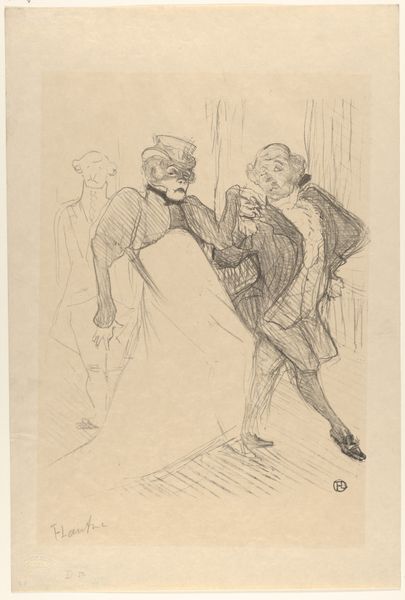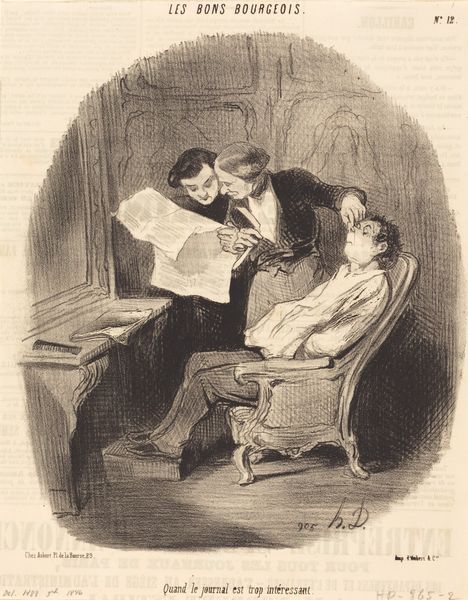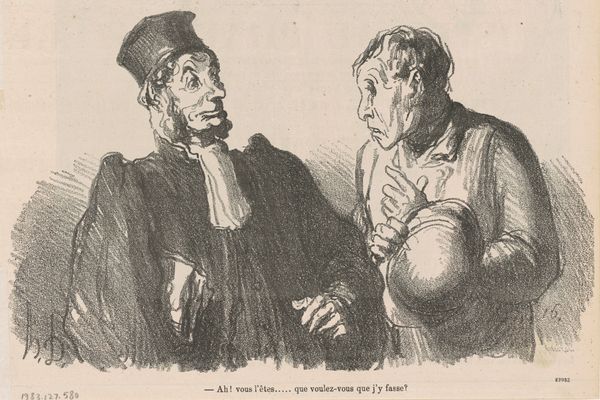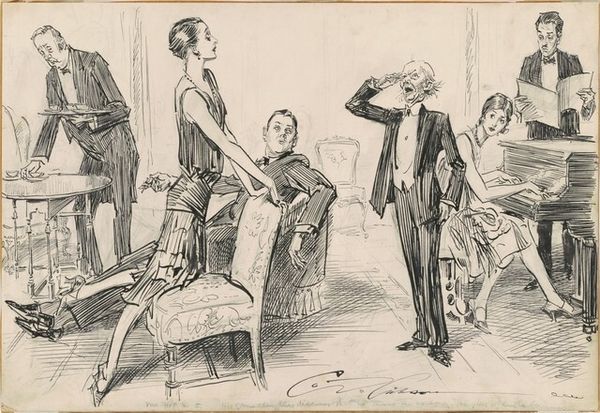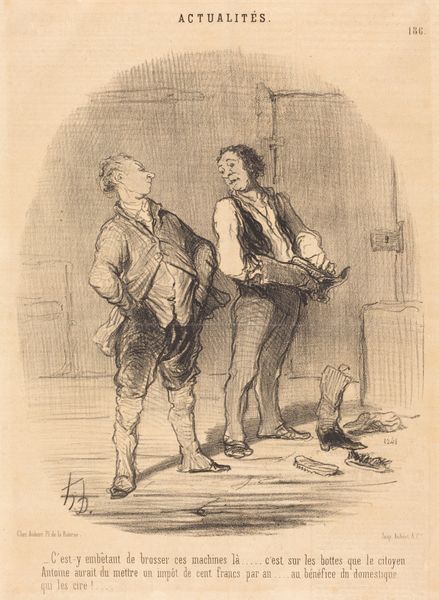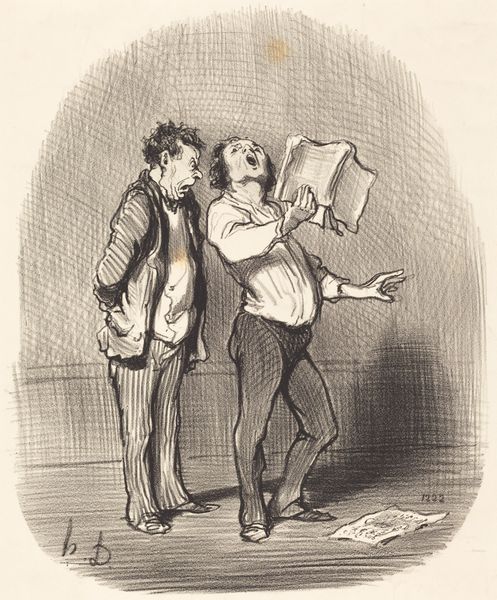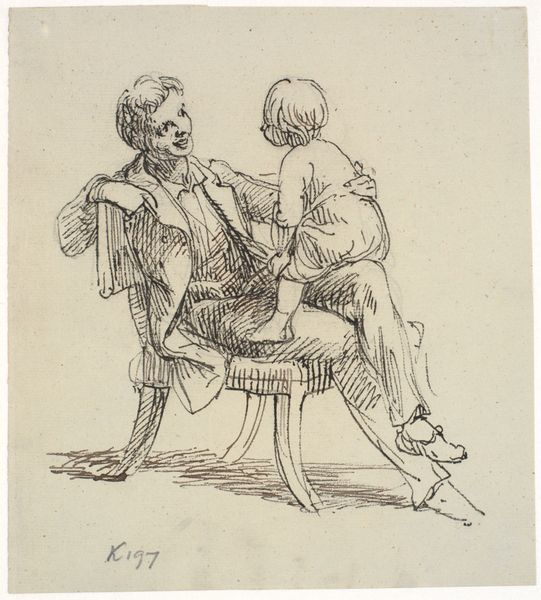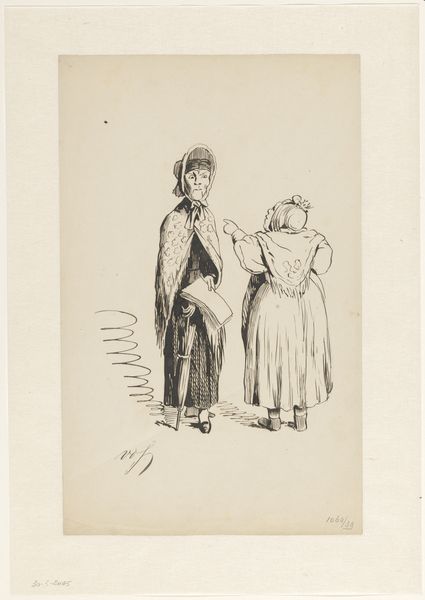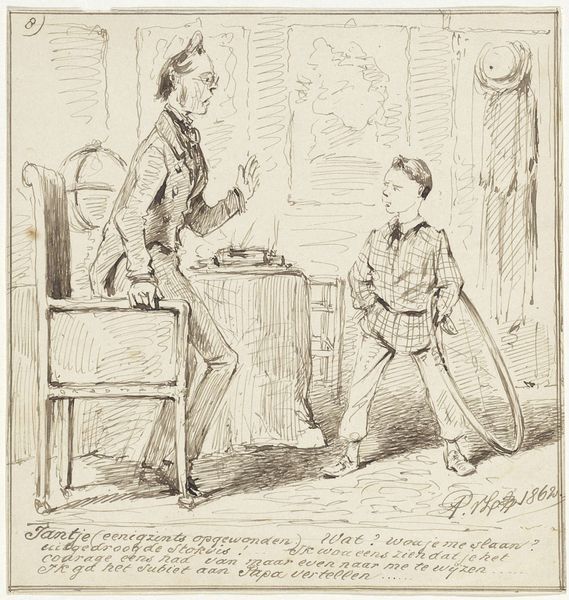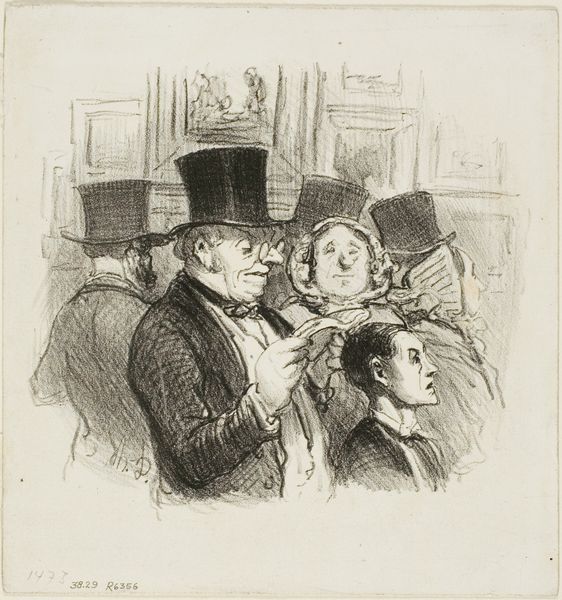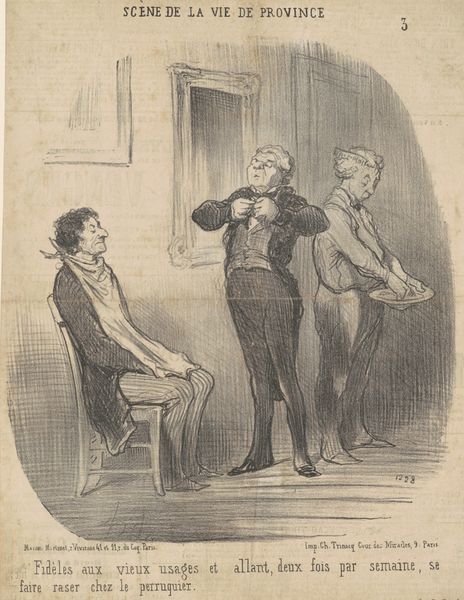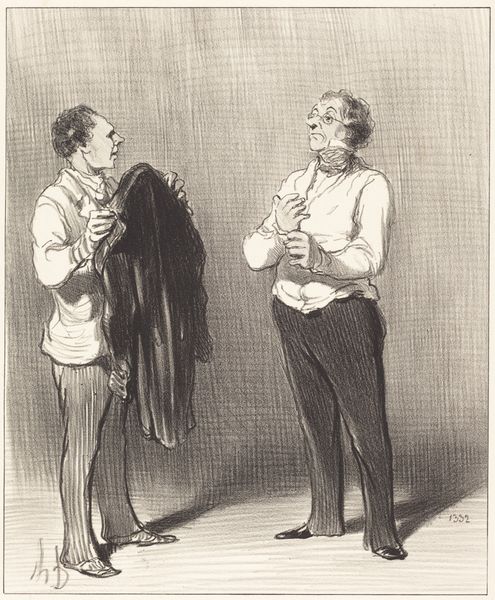
Illustration in Jérôme Paturot, by Louis Reybaud, Paris, 1846 1841 - 1851
0:00
0:00
drawing, print, paper, ink
#
drawing
#
narrative-art
# print
#
caricature
#
paper
#
ink
#
romanticism
#
genre-painting
Dimensions: sheet: 3 1/2 x 4 in. (8.9 x 10.2 cm)
Copyright: Public Domain
Editor: Here we have "Illustration in Jérôme Paturot," dating to the 1840s, a drawing in ink by J.J. Grandville. It's a bit unsettling, actually, the way the artist elongates the figure on the left. How do you read this piece? Curator: What strikes me immediately is its engagement with the politics of representation in 19th-century France. This was a time of intense social and political upheaval. Grandville's caricatures were often pointed critiques of bourgeois society. Editor: So, it's social commentary? I definitely see the satire in the exaggerated features. Curator: Precisely. But consider also *who* is being satirized. What does it mean to mock these men? Are we laughing *with* them, or *at* them? Are we implicating the artist? The title is revealing as it draws on the novel "Jérôme Paturot" which lampooned the middle class under the July Monarchy. Grandville exaggerates their aspirations, making them look ridiculous but also powerful through satire. Editor: The power dynamic between the two men is intriguing. The figure on the left is definitely taking center stage. The way he uses his hands it's like he is expressing all he has inside. What does this placement communicate? Curator: It raises questions about class, about performance, even about complicity. He dominates the space. How do these kinds of power dynamics reflect gender dynamics too, in an era where women's voices were systematically subdued? How do these power dynamics affect and are affected by their racial identity? Editor: This drawing now has layers that I wasn’t able to see initially. The way satire unveils social dynamics... Curator: Yes! Art provides the framework for challenging our comprehension of representation within social and historical circumstances.
Comments
No comments
Be the first to comment and join the conversation on the ultimate creative platform.
